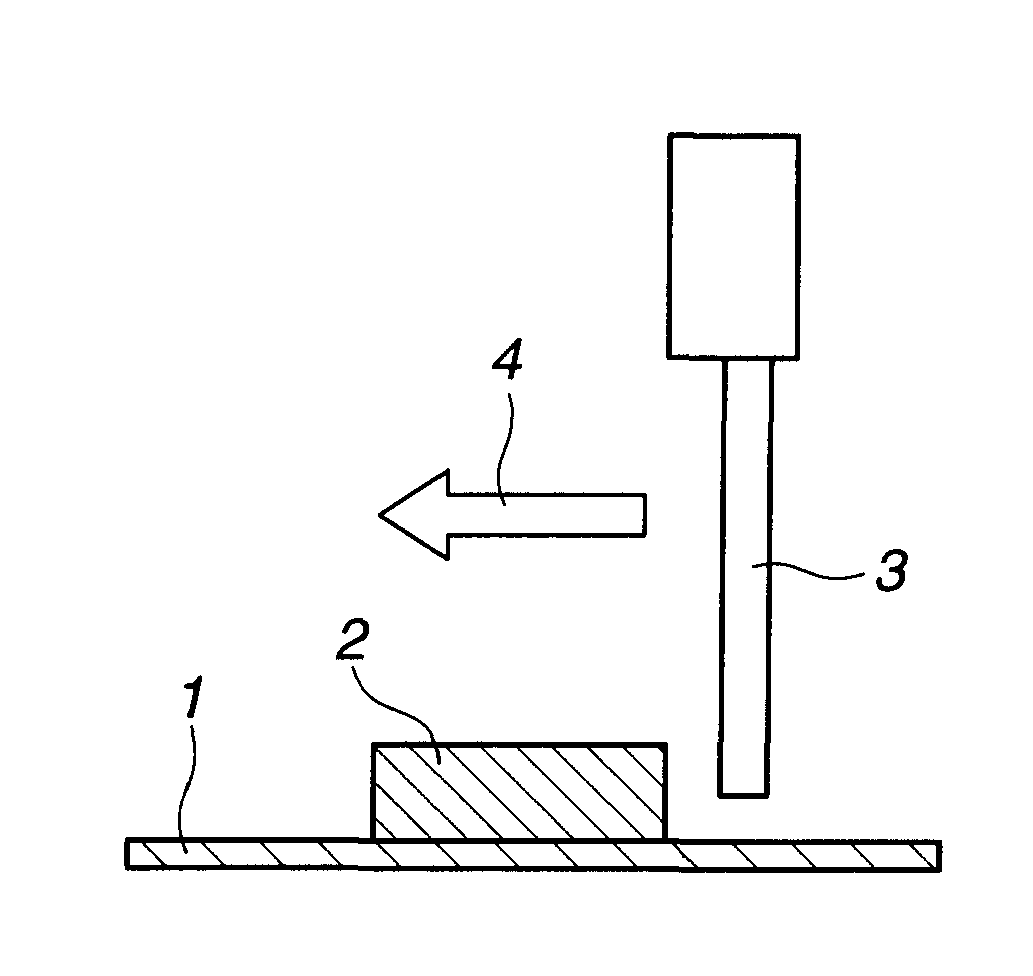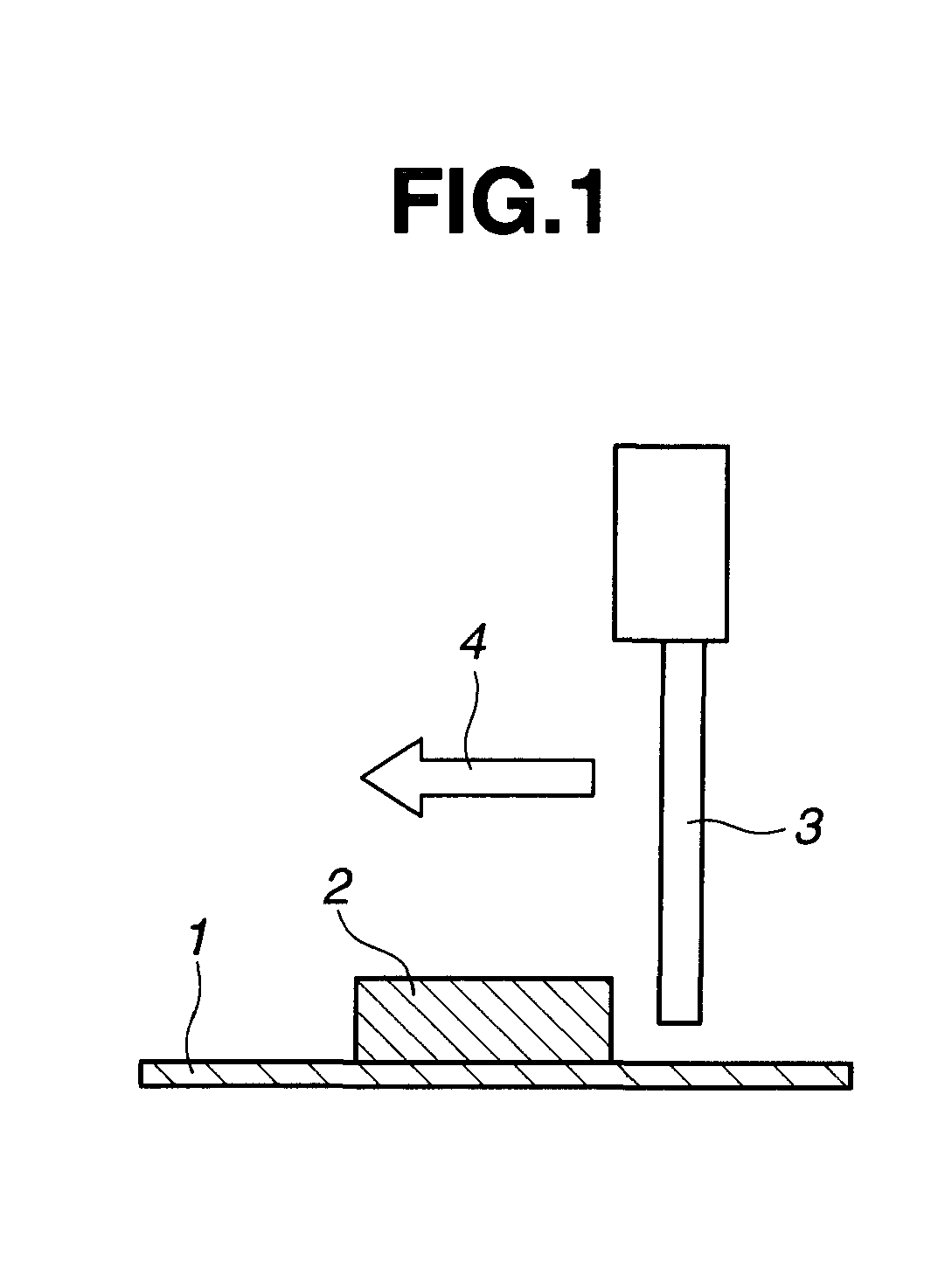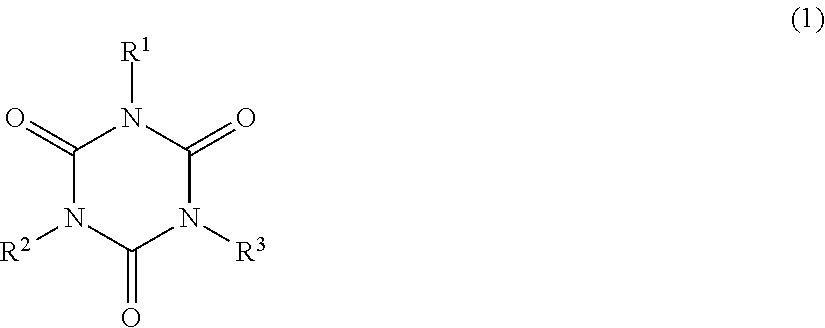Chemically amplified negative resist composition, photo-curable dry film, making method, pattern forming process, and electric/electronic part protecting film
- Summary
- Abstract
- Description
- Claims
- Application Information
AI Technical Summary
Benefits of technology
Problems solved by technology
Method used
Image
Examples
synthesis example 1
[0289]In a 5-L flask equipped with a stirrer, thermometer, nitrogen purging line and reflux condenser, 396.5 g of compound M-1 was dissolved in 1,668 g of toluene. To the solution, 859.2 g of compound M-4 was added, and it was heated at 60° C. To the flask, 2.2 g of platinum-on-carbon catalyst (5 wt %) was admitted whereupon the internal reaction temperature rose to 65-67° C. After confirmation of this temperature rise, the flask was heated at 90° C. for 3 hours and cooled to 60° C. again. To the flask, 2.2 g of platinum-on-carbon catalyst (5 wt %) was admitted, and 78.3 g of compound M-5 was added dropwise over one hour. At this point, the flask internal temperature rose to 79° C. After the dropwise addition, the reaction solution was ripened for 3 hours at 90° C. and then cooled to room temperature. Then 1,550 g of methyl isobutyl ketone was added. The reaction solution was filtered through a filter under pressure to remove the platinum catalyst. To the silicone structure-bearing ...
synthesis example 2
[0290]In a 5-L flask equipped with a stirrer, thermometer, nitrogen purging line and reflux condenser, 352.8 g of compound M-1 and 90.0 g of compound M-3 were dissolved in 1,875 g of toluene. To the solution, 949.6 g of compound M-4 and 6.1 g of compound M-5 were added, and it was heated at 60° C. To the flask, 2.2 g of platinum-on-carbon catalyst (5 wt %) was admitted whereupon the internal reaction temperature rose to 65-67° C. After confirmation of this temperature rise, the flask was heated at 90° C. for 3 hours and cooled to 60° C. again. To the flask, 2.2 g of platinum-on-carbon catalyst (5 wt %) was admitted, and 107.3 g of compound M-6 was added dropwise over one hour. At this point, the flask internal temperature rose to 79° C. After the dropwise addition, the reaction solution was ripened for 3 hours at 90° C. and then cooled to room temperature. Then 1,700 g of methyl isobutyl ketone was added. The reaction solution was filtered through a filter under pressure to remove t...
synthesis example 3
[0291]In a 5-L flask equipped with a stirrer, thermometer, nitrogen purging line and reflux condenser, 352.8 g of compound M-1 and 116.1 g of compound M-2 were dissolved in 1,875 g of toluene. To the solution, 949.6 g of compound M-4 and 6.1 g of compound M-5 were added, and it was heated at 60° C. To the flask, 2.2 g of platinum-on-carbon catalyst (5 wt %) was admitted whereupon the internal reaction temperature rose to 65-67° C. After confirmation of this temperature rise, the flask was heated at 90° C. for 3 hours and cooled to 60° C. again. To the flask, 2.2 g of platinum-on-carbon catalyst (5 wt %) was admitted, and 107.3 g of compound M-6 was added dropwise over one hour. At this point, the flask internal temperature rose to 73° C. After the dropwise addition, the reaction solution was ripened for 3 hours at 90° C. and then cooled to room temperature. Then 1,700 g of methyl isobutyl ketone was added. The reaction solution was filtered through a filter under pressure to remove ...
PUM
 Login to View More
Login to View More Abstract
Description
Claims
Application Information
 Login to View More
Login to View More - R&D
- Intellectual Property
- Life Sciences
- Materials
- Tech Scout
- Unparalleled Data Quality
- Higher Quality Content
- 60% Fewer Hallucinations
Browse by: Latest US Patents, China's latest patents, Technical Efficacy Thesaurus, Application Domain, Technology Topic, Popular Technical Reports.
© 2025 PatSnap. All rights reserved.Legal|Privacy policy|Modern Slavery Act Transparency Statement|Sitemap|About US| Contact US: help@patsnap.com



